



 |
 |
 |
| The Cannon Foundry was established in 1826 by Edward
(see above) and Stephen Sheldon. Located at
Havacre Lane in Deepfields, Coseley. The Foundry specialised in
the manufacture of household and general ironmongery. Cooking
utensils became the business' main product, it was a proud boast
that the Cannon brand of cast iron holloware was known and in use
worldwide. The Cannon holloware range included saucepans,
stewpans, kettles, oval pots, preserving kettles and other similar
household products.
This expertise extended to the manufacture of products for export throughout the growing British Empire. These included Danish, Marmont, French African, St.Lucia and many other pots; together with Dutch and Havana stoves, camp ovens, bake pots, cooking and cassada plates, rice bowls, rice plates or comales, African rice pans and many other items. |
 |
One of the largest pots produced at the Foundry was a huge three legged pot of some 14 gallons (63.5 litres) capacity. This was mostly used for palm oil boiling in the West African markets. In 1884 the title of the company was changed from E.Sheldon & Co Ltd, to the Cannon Holloware Co Ltd, which became registered with a capital of £50,000. The conversion of the concern into a private limited cmpany was to simplify the interests of the partners; and reflect the company brand name. The demand of cast iron cooking utensils declined towards the end of the 19th century, as competitors introduce enamelled steel and aluminium alternatives. |
 |
 |
Cannon introduced its first gas cooker in 1895; the cookers achieved distribution through leading provincial and London gas companies who hired them to customers. An example of one of the first Cannon gas cookers is the 'Hercules'. (Pictured left and right) The Hercules was one of the most popular and earliest (pre1900) of the Cannon products and met with exceptional success. Its distinct advantage was the 'Porceliron' lining which considerably increased the durability of the cooker and enhanced the utility of the stove. The 'Hercules' was a combination of best materials and thorough workmanship; it was perfectly clean and could be taken apart very rapidly to maintain this condition. Beside being the leading gas cooker for cleanliness, it also led the field for convenience and economy in gas. Its efficiency in roasting, baking and grilling had been testified by practically all the leading authorities of the day. |
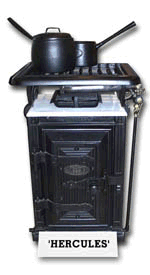 |
Other Cannon innovations in gas cooking from the last century were the Cannon series of 'Chef Cookers' which were made out of a dark-green enamelled iron, giving the cooker a very handsome appearance and a world first for Cannon by introducing colour into a domestic cooker finish! 'Penny Slot cookers' followed in 1898, an innovation particularly suited to the growing gas cooker rental market. In fact an old penny would purchase 25 cubic feet of gas! reported at the time to be sufficient to cook a dinner for several people!
By the turn of the century, Cannon's reputation for quality and innovation was established. Cannon's advertising slogan of the time claimed:-
The Peaceful Cannon - Peace hath her victories no less renowned than war,
The Beneficent Cannon - Ever increasing the sum of human comfort,
The Ubiquitous Cannon - Scattering good(s) the wide World o'er,
The Progressive Cannon - Always to the front with modern improvements.
The growing supply of domestic gas supply saw Cannon introduce its first gas fires shortly after the turn of the century. Cannon introduced an assortment of varied gas fires which included many artistic designs calculated to meet all possible requirements. The rapid expansion of the company business in this direction was little short of phenomenal. The gas fires quickly achieved popularity, for their excellence was recognised in official tests, and among many awards, were placed first for hygienic efficiency and first for radiant efficiency in smoke abatement trials.
The company introduced a distinctly new process of enamelling their fires known as "Vitro Lustre" which was registered as a trade mark to describe the patent process. It had a remarkable durability and was unaffected by the heat.
 |
Cannon were consistently updating their fires to meet modern design, construction requirements and regulations. Innovation in gas fires included the introduction of air/gas regulators to control heat output and the Cannon "Radio" pattern cast in one piece. Gas fires continued to outstrip the most optimistic hopes of the company and demand for the fires was tremendous. So the foundations were built for Cannon to be a leading manufacturer of gas cookers and fires throughout the 20th century. Cannon's reputation for the manufacture of quality gas cookers and gas fires has continued throughout this century. Leading the Industry in innovation and quality has been the hallmark of Cannon's success. Cannon was purchased by GEC in 1963 and became part of General Domestic Appliances(joint venture company owned by GEC and GE of America) in 1987. In 1993, Cannon's manufacturing facility and offices moved to Blythe Bridge, Stoke-on-Trent. To this day Cannon continue to be a leading gas cooker and gas fire brand, continuing the principles of quality and innovation established over 170 Years ago. |

Advert circa 1865
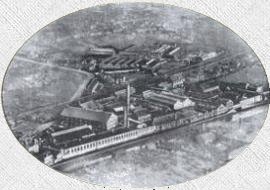 Cannon Factory 1926 |
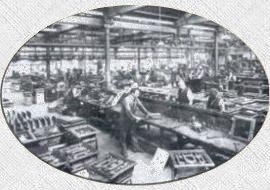 Fitting Shop |
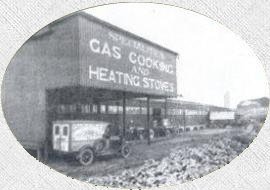 Cannon Foundry |
 Foundry Workshop |
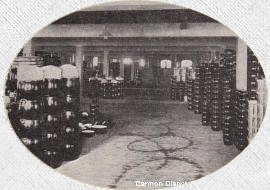 Dispatch Department |
Photographs by kind permission of Denise Hurst |
Two special trains took 850 people for a visit to Blackpool. They had free admission to the Winter Gardens, Pleasure Beach, Big Wheel, The Tower and The Baths.
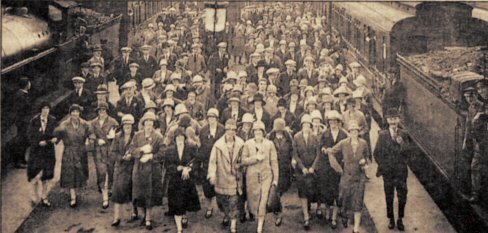 Cannon employees at Blackpool Station 1926 |
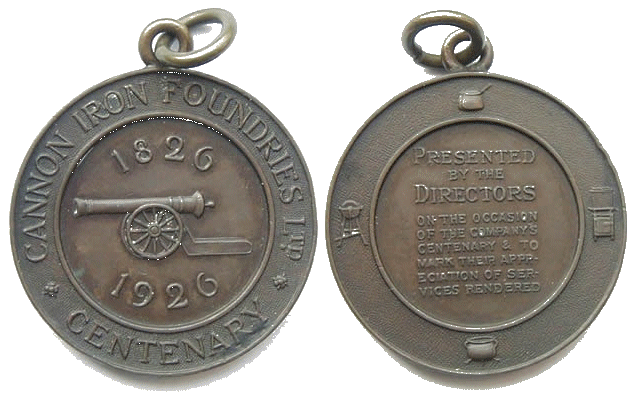 Cannon Centenary Medallion
Cannon Centenary Medallion |
|
|
Cannon Foundry Coseley had its own Fire Brigade It was formed in 1894 for the protection of the works. They had horse drawn vehicles and steam operated appliance.
The Officers circa 1906 were listed as:
Captain : R. D.B. CLAYTON
Lieutenant : E. HAWTHORNE
Secretary : E.B. CRUMP 45,Tunnel St, Coseley.
Inspector : F. DAVIS 17A Bissell St, Wallbrook, Coseley.
Foreman : A TURLEY, 58 Tunnel St, Coseley.
Engineer : D PEPLOW, 78 Broad St. Wallbrook, Coseley.
10 firemen were:
J. PICKERILL 44 Hampton St. Roseville, Coseley.
B. BOWATER 18 Old Meeting Rd, Coseley.
J. CLARK, 29 Chapel St. Wallbrook, Coseley.
M. WILSON. 58 Ward St. Coseley.
W. HOWELL, 13 Havacre Lane, Deepfields.
J. SMITH. 3 Rookery Lane, Lanesfield.
W. BRADLEY, 22 Bank St. Roseville, Coseley.
J. JONES, 60 Tunnel St. Roseville, Coseley.
E. SMALLMAN, 56 Hollywell St. Hurst Hill.
 |
|
Cannon Iron Foundries Football Team 1931-32 Back row L to R Front row L to R The photograph above was probably taken by George BEACH (my Great Uncle - marked with an 'X" in the photo below) who was Secretary of the Club and a long time employee of the company. |
|
Canon Iron Foundries Football Team 1931 |
 |

The lorry on the left (Reg E 7859) was the first heavy lorry bought by the Cannon and was driven by my Great Uncle George BEACH, it had solid tyres and carbide lamps. A trip to London and return took approximately one week. A youth named Dickie Norton was "drivers mate" |
 |
This photo is of E7859 with Great Uncle George (drving), dressed as a pirate in the Coseley Carnival Mid 1920s, they went as "The Froth Blowers." |
| Search the whole Sedgley site |